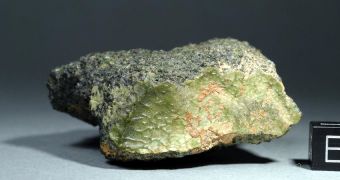Back in 2012, a green meteorite was discovered in Morocco. Following their carefully analyzing the make-up of this space rock, scientist Anthony Irving of the University of Washington and his colleagues came to understand that this meteorite most likely came from Mercury.
Prior to Anthony Irving and his colleagues' arguing that the NWA 7325 space rock reached our planet after breaking off from either Mercury or some other space object whose structure was fairly similar to that of said planet, it was believed that the meteorite fell from Mars.
On the other hand, some maintained that it was merely a piece of an asteroid, Times of India reports.
While taking part in the 44th annual Lunar and Planetary Science Conference in The Woodlands, Texas, Anthony Irving made the following observations:
“It might be a sample from Mercury, or it might be a sample from a body smaller than Mercury but [which] is like Mercury.”
According to the same source, scientist Anthony Irving bases his claims that this particular meteorite used to be part and parcel of Mercury at one point in the past on the fact that the NWA 7325's magnetic intensity is a rather low one.
From this standpoint, the space rock does not resemble any others of its kind thus far discovered on our planet. However, it does resemble Mercury's low magnetism, suggesting that it is no stranger to the planet.
This theory is backed up by the fact that, as far as researchers can tell, this meteorite's chemical make-up is pretty much one of a kind amongst all others documented by science thus far.
Just for the record, NWA is not so much a proper space rock as it is a group of 35 meteorite fragments whose combined weight amounts to 345 grams (12.16 ounces).
It is believed that these meteorite samples date back to roughly 4.56 billion years ago.

 14 DAY TRIAL //
14 DAY TRIAL //